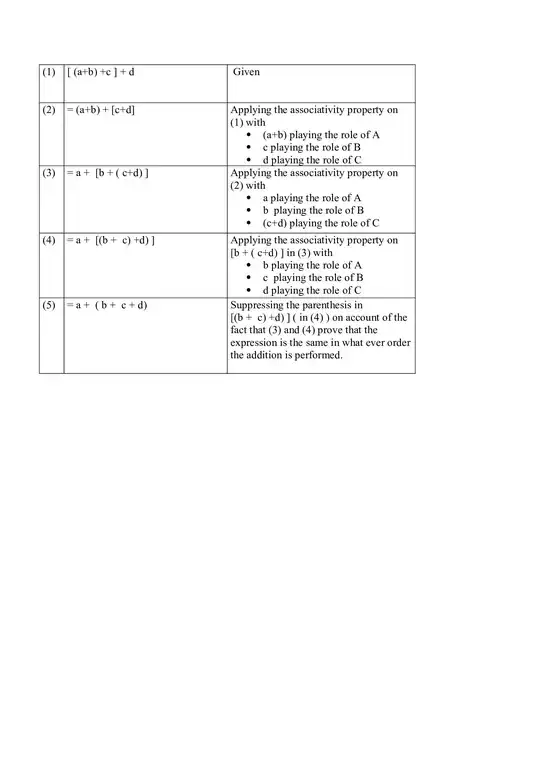I look at $(a+b)+c = a+(b+c)$ for $a,b,c \in \mathbb{R}$ and think this tells me if I see three addends and two of them are in parentheses I can shift them without changing the sum. It obvious, at least with simple numbers, that I can group addends however I want without making an error.
But how does the associative property justify $(a+b+c)+d = a+(b+c+d)$ or even $a+(b+c+d) = (a+b)+c+d$? I mean, the way I see it is the associative property makes a statement about what you are allowed do if you have exactly three numbers and two parentheses.
Or is $(a+b)+c = a+(b+c)$ for $a,b,c \in \mathbb{R}$ just the mathematical way to say if you have a bunch of addends you can put parentheses wherever you want without changing the result?
